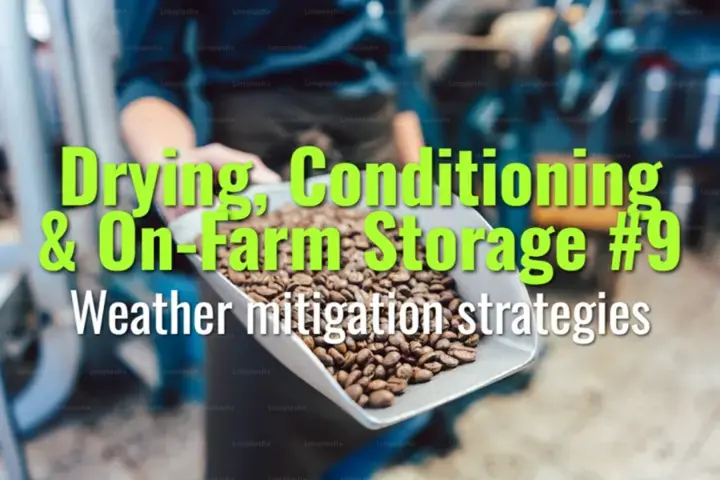Weather mitigation strategies
This topic explains how farmers manage weather-related risks during coffee drying and storage, with strategies to protect against rain, humidity, wind, and excessive sun exposure.
- Coffee Basics Nerds
- 2 min read
Article 9 of 12 in Drying, Conditioning & On-Farm Storage/

Why Weather Mitigation is Critical
- Coffee drying is highly weather-dependent.
- Unpredictable rain, high humidity, or heat waves can ruin carefully harvested lots.
- Weather shocks can cause mold, over-fermentation, case hardening, or uneven drying.
Common Weather Risks
- Rain: Re-wets drying beans, encouraging mold.
- Humidity: Slows drying, increases risk of sour defects.
- Excessive sun/heat: Causes cracking, rapid surface drying, and loss of aromatics.
- Wind: Speeds drying unevenly or scatters cherries.
Mitigation Strategies
1. Protective Structures
- Solar dryers/tunnels: Transparent covers with vents protect against rain.
- Shade nets: Reduce excessive heat and UV stress.
- Plastic tarps: Quick, low-cost protection for patios.
2. Drying Protocol Adjustments
- Spread thinner layers during humid weather.
- Increase turning frequency to avoid hotspots.
- Move lots to mechanical dryers if prolonged rain is expected.
3. Infrastructure & Investment
- Raised beds improve airflow, reducing humidity impact.
- Hybrid drying systems combine solar pre-drying with mechanical finishing.
- Weather monitoring tools (thermometers, hygrometers, rain gauges) support decision-making.
4. Storage Safeguards
- Store parchment in climate-stable warehouses.
- Use hermetic bags to prevent rehydration during wet seasons.
- Keep lots off the ground to avoid condensation damage.
Quality Benefits
- Maintains consistent drying curve despite unpredictable weather.
- Protects against loss of sweetness and fruit clarity.
- Ensures beans reach 10–12% moisture safely.
Lasting Importance
Weather mitigation strategies are essential in climate-affected coffee regions. By investing in protective infrastructure and adaptive drying protocols, producers safeguard quality, food safety, and income stability even under unpredictable conditions.
You might also like:
- Tags:
- Lasting Importance
- Food Safety
- Uneven Drying
- Raised Beds
- Low Cost
- Solar Dryers
- Mechanical Dryers
- High Humidity
- Turning Frequency
- Hermetic Bags
- Decision Making
- Shade Nets
- Monitoring Tools
- Increases Risk
- Drying Beans
- Excessive Heat
- Coffee Regions
- Slows Drying
- Quality Benefits
- Sweetness Fruit
- Safeguard Quality
- Dryers Tunnels